By G. L. Pease
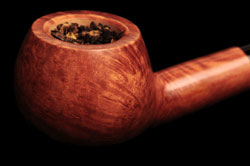 There are always many great questions in the mailbag. It’s fun reading through them, but sometimes a bit of a head-scratcher selecting the ones to include in the month’s column. Of course, the overachiever in me wants to answer them all at once, but, truthfully, some require actual research, and have to be put aside for the future. So, if you’re fuming over the fact that you’ve sent in a question that I’ve not included yet, please know that it could well be simply because I don’t have a good answer for you, and that I hope to respond in a future edition.
There are always many great questions in the mailbag. It’s fun reading through them, but sometimes a bit of a head-scratcher selecting the ones to include in the month’s column. Of course, the overachiever in me wants to answer them all at once, but, truthfully, some require actual research, and have to be put aside for the future. So, if you’re fuming over the fact that you’ve sent in a question that I’ve not included yet, please know that it could well be simply because I don’t have a good answer for you, and that I hope to respond in a future edition.
On the other hand, if you’ve asked what color my socks are (you know who you are), I may continue to ignore your question. It’s not that I’m being elusive. I’m a bit colorblind, not severely, but have some difficulty, especially in the dim torchlight of my underground lab, with greens and browns, purples and blues. I usually have to ask my son to help me match things up when unsure, and with overall fashion advice, in general. I can’t always wear a lab coat (complete with pocket protector) and flowered Bermuda shorts to important functions.
 Lately, being a typical nine-year old, he’s been playing what he thinks are funny little tricks on me, and I’ve found myself, more than once, embarrassed in social settings when my socks, being amply revealed by the too short trousers he’d selected for me to wear, have been unmatched. The purple and orange combination was particularly unsettling, resulting in much snickering and pointing at a recent convention of the MTSMB (Mad Tobacco Scientists and Master Blenders) where I was invited to deliver a lecture on the molecular makeup of dead root briar, its effect on bowl shape calculus and the smoking characteristics of century old tobaccos. (A fascinating topic, I’m sure you’ll agree!)
Lately, being a typical nine-year old, he’s been playing what he thinks are funny little tricks on me, and I’ve found myself, more than once, embarrassed in social settings when my socks, being amply revealed by the too short trousers he’d selected for me to wear, have been unmatched. The purple and orange combination was particularly unsettling, resulting in much snickering and pointing at a recent convention of the MTSMB (Mad Tobacco Scientists and Master Blenders) where I was invited to deliver a lecture on the molecular makeup of dead root briar, its effect on bowl shape calculus and the smoking characteristics of century old tobaccos. (A fascinating topic, I’m sure you’ll agree!)
Just wait, my little guy, until you’re a teenager asking me for dating advice. A father’s revenge is patient and sweet. On to the questions.
Bob writes: I would like to hear your thought on the aging effects on Latakia. I have heard that after ten tears or so Latakia becomes quite drab and flat. Is this true? How will my stored tins of Westminster be after 10 or more years from now?
A: Drab and flat might be an overstatement, though certainly, things will change. Latakia, more than other tobacco types, does soften considerably with long age. This isn’t necessarily a bad thing, and a much depends on what you’re expecting from the blend. If you like the sharper, more pungent tang of fresher Latakia, you might be disappointed in a ten year old tin. But, if you’re chasing the added richness and complexities that older vintages offer, you’ll find some real magic there.
The blend’s composition plays a significant role in longer-term aging. If the structure of the blend is good, if there’s enough body and sugars from the other leaf, then time’s smoothing of the sharper edges can be welcome. The sweetness and complexity of virginias are enhanced, and the contribution of any orientals present can become more pronounced, more dominant in the flavors when not masqued by more aggressive smoky, leathery notes of younger Latakia. The balance changes, and the result can be very rewarding.
On the other hand, if the blend relies more predominately on the youthful exuberance of the Latakia’s more intense flavors and aromas, the overall blend can seem flat after just a few years’ time.
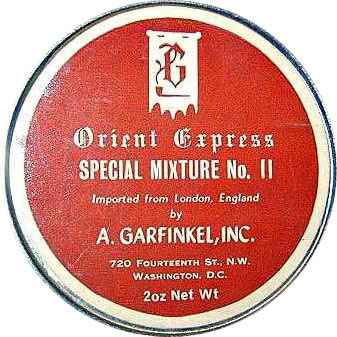 One of my all-time faves is the long gone Garfinkel’s Orient Express #11 that was made by Sobranie for the Washington DC shop. I’ve got quite a bit of it cellared, and at this point, it’s at least 30 years old. It’s still a magnificent smoke, despite the softening of the Latakia. There’s so much more to the blend that, at least to my palate, it has not suffered at all, though it is certainly quite different from what it must have been when young.
One of my all-time faves is the long gone Garfinkel’s Orient Express #11 that was made by Sobranie for the Washington DC shop. I’ve got quite a bit of it cellared, and at this point, it’s at least 30 years old. It’s still a magnificent smoke, despite the softening of the Latakia. There’s so much more to the blend that, at least to my palate, it has not suffered at all, though it is certainly quite different from what it must have been when young.
I tend to develop my blends with aging in mind, in hopes that they’ll enjoy similarly long lives in the tins, and will bring those who age them a lot of enjoyment in the future. So far, I’ve had wonderful experiences from my older vintages, so the strategy seems to be working. Since you mention Westminster, specifically, I’ll say that the dominance of the orientals is what makes the blend what it is, but there’s still just enough virginia in its formulation to give it legs. I don’t think ten years will find it over-the-hill, though twenty might. I’ll revisit in 2017 to see how its fared!
From Paul: I’ve just recently been given a BP Jumbo pipe from the 1960s or 70s. It hasn’t been smoked since then and the cake is still perfectly intact and quite thick. I’m not sure how to handle this since it’s not a recent cake. Should I ream it down as a typical cake or try to remove the cake completely? It’s just the age of the pipe and cake that has me worried.
A: That cake is probably quite hard at this point, and having lost all of its moisture will be very fragile, and prone to shattering, so getting it to the thickness you want won’t be easy, but it’s not advisable to go back to bare wood, since there’s always the possibility of uncovering some nasty surprises. If you feel like rolling the dice, you can try a reamer, but it really won’t offer enough control, and the blade will tend to bite into the carbon, increasing the likelihood that the cake will shatter. In other words, you will probably want to use some other technique. I called George Dibos of Precision Pipe Repair to ask what he’d recommend. He’s done some superb restoration work for me, and I value his opinions on these issues.
His advice on the safest way to do this is to use sandpaper, about 80 grit, on a dowel rod with the end rounded into a bullet shape, so you can get to the bottom of the bowl. Cut the sandpaper into strips, and wrap it like a barber’s pole around the dowel, then use this to sand the cake down carefully. Finish the job with a somewhat finer paper, about 200 grit, but be sure to leave some scratch marks in the cake to which the new one can more readily adhere.
He then told me about an old, heavily smoked and much loved Dunhill someone had sent him in which the cake had come away to reveal a nasty vertical fissure in the briar, but one that didn’t find its way through the bowl. Of course, you can cake over a crack like that, but the newly exposed edges are more prone to burning, so prudence is the watchword, and it’s best to stop sanding well before you get to bare wood, which he suggested was categorically not a Good Thing.
 Robert wonders: You have probably been asked this hundreds of times, but have you ever thought of doing a seasonal blend each Christmas. I know McC does one but it would be cool if everyone’s favorite Artisanal blender came up with one each year for his faithful followers.
Robert wonders: You have probably been asked this hundreds of times, but have you ever thought of doing a seasonal blend each Christmas. I know McC does one but it would be cool if everyone’s favorite Artisanal blender came up with one each year for his faithful followers.
A: A timely question! Every year, I think about doing a seasonal blend. Usually, it’s about a week before Christmas, and far too late to do anything about it. So, I set off planning something for next year, which I promptly forget about shortly after Boxing Day, and it doesn’t again cross my mind until sometime the following year, usually early enough that I’ll convince myself it’s too soon to do anything about it. Then, it rattles about in my sieve-like brain until it falls through the holes, and I forget it again for a few months. Lather, rinse, repeat. Maybe if I start now, I can have something for next Halloween.
More seriously, I’d love to do it. I’ll shoot for next year!
This comes from Les: Once in a while I open an aged tin of tobacco and smoke a bowl, let it sit for a day or three and go for another bowl, to find it full of mold. Is there a way to save the tobacco once this has happened? Perhaps 10 minutes in the oven or something? I lost a very expensive 100 g tin or Four Square that way and am still heartbroken about it. Any ideas?
A: That’s always disappointing, and I’ve had something similar happen recently to a large tin of old Sobranie 759. I can relate to it being heartbreaking! At least I got to enjoy a couple bowls first. But, once a mold infestation has taken hold, there’s no redemption for the tobacco.
It’s not absolutely clear why this sometimes happens. It’s likely that mold spores are already in the tobacco, and only fail to germinate in the sealed, aged tin because of the absence of oxygen. Fermentation seems to consume most of the oxygen, producing CO2 as a byproduct. Most molds are obligate aerobes, requiring oxygen to germinate and metabolize. When you open the tin, you give them what they need. Why some tobaccos seem to grow mold even in sealed tins is something I’ve never quite figured out, and perhaps a visiting mycologist will see this and respond. Perhaps the fermentation is arrested early, or maybe the mold germinates before fermentation has taken place, or maybe there’s a compromise in the seal. But, that’s another subject.
Ozonation would kill the spores prior to germination, but who has an ozone generator in their kitchen? Exposure to broad-spectrum UV might do the trick as well. Drying the tobacco would certainly help, but then you’d lose much of those wonderful byproducts of age. Keeping it very cold would probably slow down most molds, not all, (certainly, we’ve all seen mold grow in the fridge). Freezing would probably prevent it, but possibly would compromise the flavor of the tobacco.
The best approach would probably be to dry the tobacco down to about a 12-13% moister-level (that’s about the point where it’s dry to the touch, but not frangible), and store it in meticulously cleaned glass jars. Then, keep a very close eye on it, and if any signs of mold appear, remove the affected tobacco before it becomes an infestation. Once that fuzzy mass is obvious, though, it’s too late. The stuff stinks!
From Fred: One thing that I don’t remember coming across, which just may be my CRS advancing, in discussions about aged blends is nicotine content… I haven’t smoked any strong blends that have been around 10 years or more, so I have no personal experience. Does the nicotine content diminish with age?
Not an easy question. There’s no place for the nicotine to go, and it’s actually quite stable over time, so the short answer is no, the nicotine doesn’t diminish significantly over time, at least in a sealed tin, providing it’s been stored well. (Heat will volatilize some alkaloids, but let’s assume storage is good.)
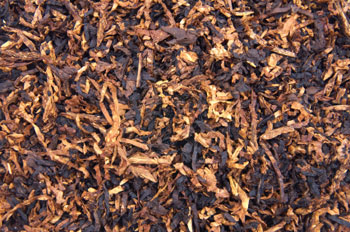 But, the pH of the tobacco changes over time, and this has a bearing on how much nicotine the smoker will end up absorbing. The lower the smoke’s pH, the less nicotine is absorbed. Many, perhaps most tobaccos become more acidic with age, so if there’s an impression of less nicotine in an aged blend, it’s likely the result of the pH change from age.
But, the pH of the tobacco changes over time, and this has a bearing on how much nicotine the smoker will end up absorbing. The lower the smoke’s pH, the less nicotine is absorbed. Many, perhaps most tobaccos become more acidic with age, so if there’s an impression of less nicotine in an aged blend, it’s likely the result of the pH change from age.
I’ve heard some smokers indicate that they feel the effects more intensely in older tobaccos. I have a feeling this has more to do with the leaf that was used then than the contribution of age.
From Kevin: Do you ever smoke pipe tobacco besides your own, and if so, what are a couple of your favorites. Also, which are your three favorite blends of your own brand?
A: I do smoke other blends, mostly vintage favorites that I’ve squirreled away over the years. And, of course, I try other blends, as it’s important to keep my fingers on the pulse of the industry. But, since I’m often in the throes of developing new things, and since I get a pretty good discount on them, I mostly smoke my own tobaccos. As to three favorites amongst my own blends, that’s a bit like asking a father who his favorite kid is. It depends on the time of year, my mood, and a number of other factors. If I’m working on something new, it will usually rise to the top of the list until it’s done. If it causes me to wear mismatched socks, it’ll get demoted…
Right now, Meridian is at least close to the top, and JackKnife, Chelsea Morning and a tin of Fillmore from 2007 that I just opened are up there, too. And, of course, there’s Union Square. And Westminster. And, in the summer, Key Largo is my go-to. Wait. You said three. Sorry.
That’s it for this month. Keep the questions coming, and see you in December.
-glp
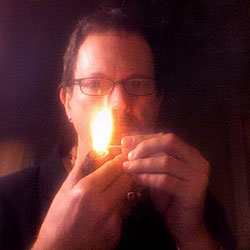
Since 1999, Gregory L. Pease has been the principal alchemist behind the blends of G.L. Pease Artisanal Tobaccos. He’s been a passionate pipeman since his university days, having cut his pipe teeth at the now extinct Drucquer & Sons Tobacconist in Berkeley, California. Greg is also author of The Briar & Leaf Chronicles, a photographer, recovering computer scientist, sometimes chef, and creator of The Epicure’s Asylum. |









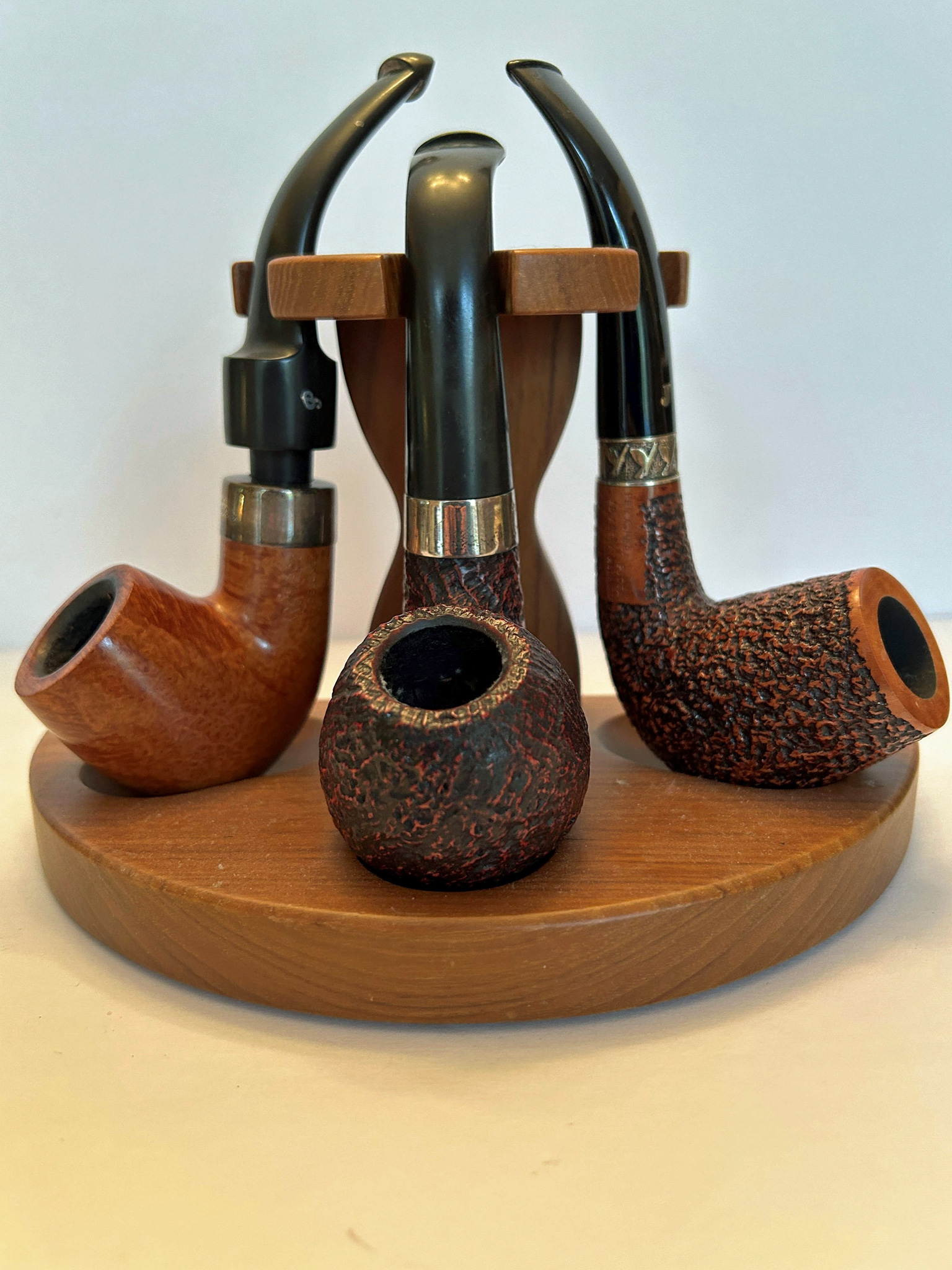

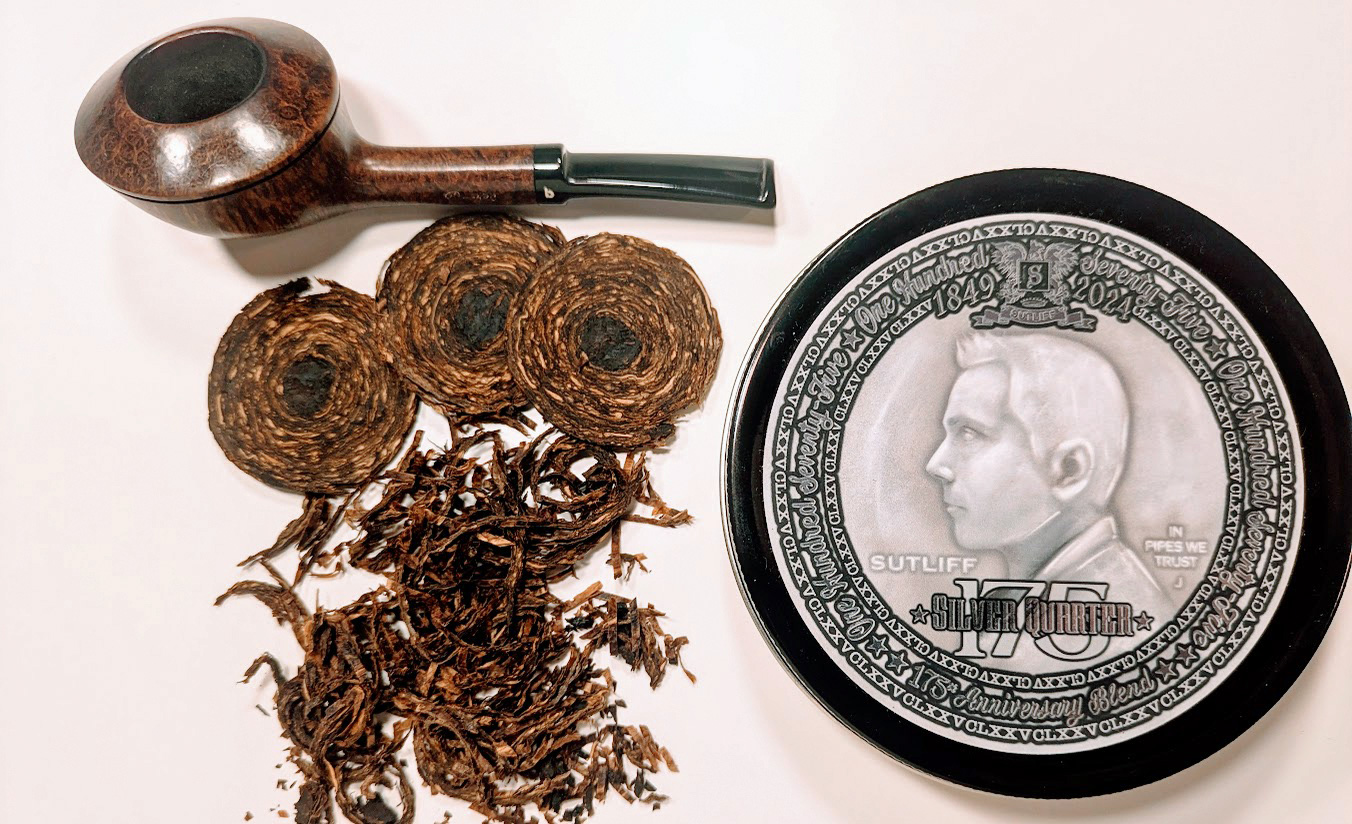


Thank you for answering my question Greg, now I can be assured that my tins of Bohemian Scandal, Mephisto, and Westminster will be great smokes years down the road!!!
Happy Puffin, Bob
As always, a very entertaining and informative read Greg, thanks!
I don’t know what’s more disturbing. The fact that your kid is hell bent on embarrassing you for whatever reason or the that you actually own pair of ORANGE AND PURPLE socks!
A lot of the aging appreciation is down to one’s subjective liking for Latakia – for me the aged and less aggressive taste is preferable; and – yes – the Orient Express #11 is magnificent (friends in low places!).
Ph is a funny thing – sweeter baccy’s do taste milder, whereas so many think of Perique as strong but it’s lack of sweetness makes it seem as if the nicotine level is far higher than it actually is.
It’s worth a reprise of older threads to remind ourselves of the effects of one baccy on another in a blend; the other Orientals in a blend affect greatly the way the Latakia component comes over.
Up to press I’ve not found any blend that is not improved by age (obviously different ages for different blends); I’m not sure why we pipe smokers who aspire to quality expect blends to be at their best immediately – we’d never think that with wines?
Another great information packed article. Thanks Greg!
Just saw my post above and realize there is no indication in there that it is totally a joke. It is a joke post. AS always sir, your articles are very interesting and full of useful information and fun to read.
Greg, I love this article! Can you pass this high five on to your son for me? o/ As the owner of 3 kids about that age, those are the things that make life AWESOME. 😀
As to the mold question, I’d like to chip in as an antique book restorer. Mold (the black plague) is irreversible and will kill a book. People who leave their books in moist places like basements that tend to flood and in the bathroom next to the tub are likely to get smacked in the head with the book. Cutting out the moldy pages and praying it hasn’t spread is the only cure. I have yet to try the handheld UV sanitizers but Costco carries a 2 pack for around $89. I’d be interested in anyone who tries it out.
Oh, and since I’ve been reading your articles, you’ve now become Greg in my head. I was at the B&M the other day and said something to the effect of “I’d love to see you get in some of Greg’s blends.” He looked at me funny and I had to go “Oh! I mean Mr. G.L. Pease!”
i still dont know who Haddos is but great info and timely for me because i just opened a 85 year old tin and i really wonder what it must have tasted like when it was new
A great read as always. Mr. Pease is such a wealth of knowledge and thoroughly entertaining. I am very grateful this industry has men like Greg!
Another great, and informative read as always. Thanks, Greg!
Haddo is a chracter in Somerset Maugham’s “The Magician”, based on Alasteir Crowley renowned, among other things, for smoking Perique.
http://en.wikipedia.org/wiki/The_Magician_%28Maugham_novel%29
Hi all,
concerning the mold:
“Freezing would probably prevent it, but possibly would compromise the flavor of the tobacco.”
In don’t think that it will hurt the flavor, some tobacco dealers (here in Germany) even recommend it to store large bulk packs, and I do it myself. Haven’t tried it with aged tobacco though.
And isn’t freezing cigars/tobacco a standard procedure to kill bugs?
You should propbably do it before you open the tin, just to be safe !
Best Regards
Sebastian
Jim, there’s much more to the story behind Haddo’s Delight, but it’s not a quick one to tell, and I need to be in just the right mood to tell it. That usually involves alcohol. And, Crowley didn’t just smoke straight perique, but straight perique doused in rum. I tried it, and can promise it’s not an experience for the meek. Maybe I’ll tell the rest next month. 😉
Sebastian, quick freezing is done by much of the tobacco industry, but it might not be so easy for the home user. It would probably be best to vacuum package the tobacco before freezing it, and freezing it quickly. Putting flat tins in the freezer might not be a good idea, as the thin, elastic seals might harden and become prone to leakage. Cold isn’t really the enemy in freezing; ice is, and freezer burn. Unless done carefully, I’m not sure the results would be ideal.
I found an old trunk with the labels inside that say Burley and Bright Tobacco Half and Half, A cargo of contentment in the bowl of any pipe. Do you think the trunk is worth anything? It has been painted and I am sure this has really taken away from the value.
Thanks!
Rebecca
Rebecca, there’s no telling what the value might be. Perhaps an auction house might have a better idea, or scan ebay to see what similar items have sold for. I’m sure it has some value to someone, but who knows how much? And, yes, that it’s been painted will certainly affect the ultimate worth.